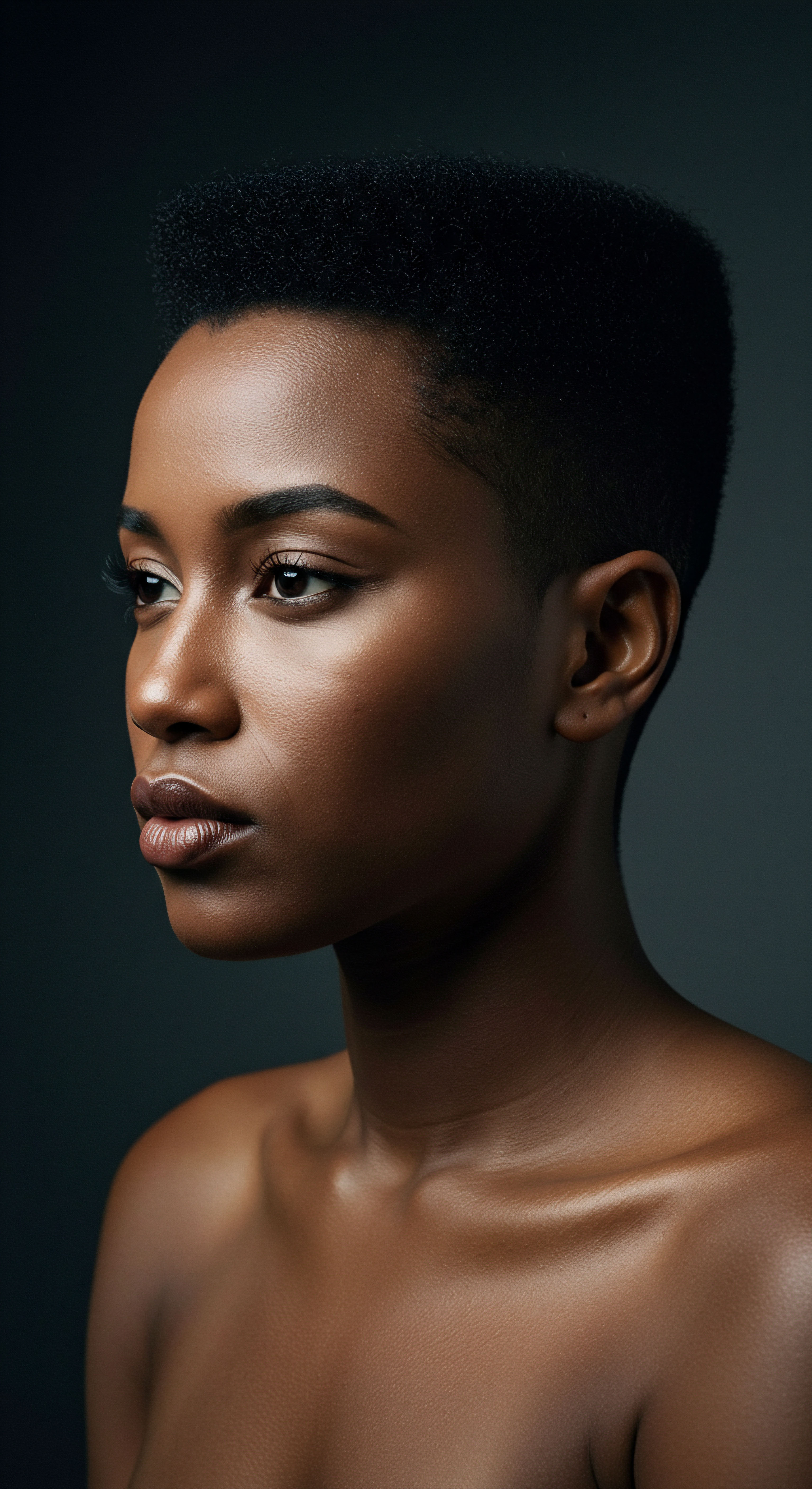
Roots
The delicate ecosystem of our scalp, a verdant landscape beneath our textured crowns, often whispers tales of resilience and vulnerability. Yet, for many navigating the bustling symphony of urban life, these whispers can transform into insistent cries of discomfort. How does the very air we breathe, thick with the city’s unique atmospheric signature, begin to affect the serene balance of our scalp, leading to irritation?
This inquiry invites us to consider the foundational truths of our hair and scalp, peeling back layers to observe the subtle, persistent interactions between our biology and the world we inhabit. It calls upon us to look beyond the superficial and to truly comprehend the intricate dance between external aggressors and the internal mechanisms that govern our scalp’s well-being.

Scalp Architecture and Environmental Stress
The scalp, a specialized extension of our skin, serves as a vital protective shield for the cranial vault and the hair follicles nestled within. Its epidermal layer, while seemingly robust, is a marvel of cellular organization, designed to maintain hydration and defend against external threats. Beneath this, the dermis houses a complex network of blood vessels, nerves, and connective tissues, providing nourishment and structural support.
For textured hair, the unique curvature of the hair follicle and the often more porous nature of the hair shaft itself introduce distinct considerations. This anatomical particularity means that the scalp’s inherent defenses, while powerful, can encounter novel challenges when faced with the pervasive presence of urban air pollutants.
The urban environment introduces specific challenges to the scalp’s inherent protective mechanisms.
Urban air is not merely air; it is a complex cocktail of particulate matter, volatile organic compounds, heavy metals, and gaseous pollutants like nitrogen oxides and sulfur dioxide. These airborne invaders, microscopic yet mighty, settle upon the scalp, infiltrating the delicate balance of its surface. They do not discriminate, yet their effects can be amplified on scalps that may already experience compromised barrier function or have hair structures that offer unique surfaces for pollutant adherence. Understanding this foundational interaction requires a careful examination of how these atmospheric elements engage with the very fabric of our scalp.
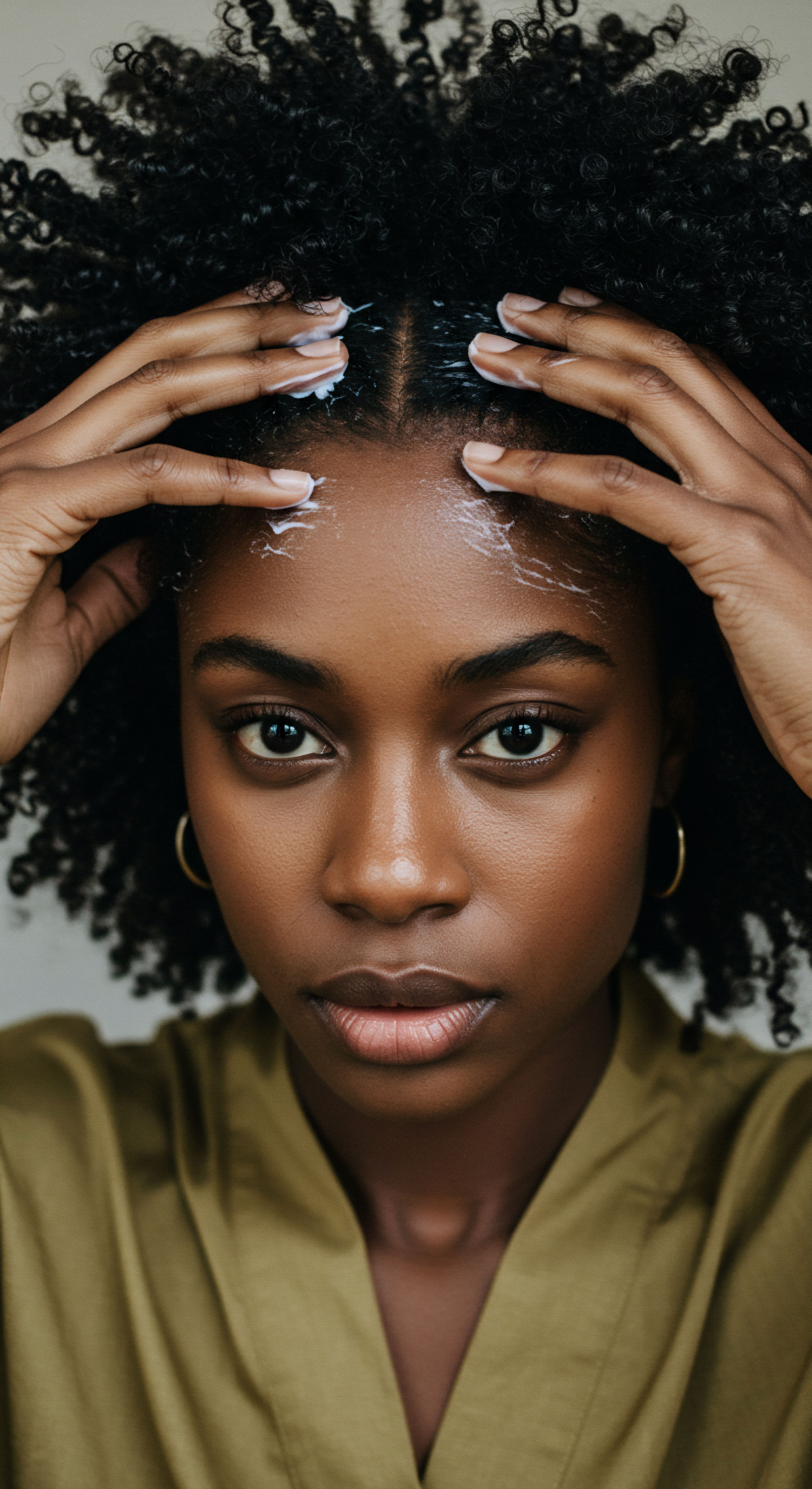
Particulate Matter and the Scalp Barrier
Among the most insidious components of urban air is Particulate Matter, often categorized by size, such as PM2.5 (particles smaller than 2.5 micrometers in diameter) and PM10. These microscopic fragments, originating from vehicle emissions, industrial processes, and even construction dust, are small enough to bypass the body’s initial respiratory defenses and deposit directly onto the scalp. Once settled, they initiate a cascade of biochemical reactions.
One primary mechanism involves the generation of Reactive Oxygen Species, leading to oxidative stress. This oxidative assault can damage cellular components, including the lipids and proteins that form the scalp’s protective barrier. A compromised barrier becomes less effective at retaining moisture, making the scalp more prone to dryness, flakiness, and, ultimately, irritation. Moreover, the presence of these particles can directly trigger inflammatory pathways within the skin cells.
A notable study from 2017 published in The Journal of Investigative Dermatology indicated that exposure to airborne particulate matter (PM2.5) significantly reduced the expression of barrier proteins like Filaggrin and Loricrin in human skin cells, by as much as 30% after 48 hours of exposure, making the skin more permeable and susceptible to irritants. This empirical finding underscores a direct biochemical pathway through which urban air pollution can undermine the scalp’s natural defenses, paving the way for chronic irritation and discomfort.

Volatile Organic Compounds and Follicle Sensitivity
Beyond solid particles, urban air also carries a significant load of Volatile Organic Compounds (VOCs). These gaseous pollutants, released from paints, solvents, cleaning products, and vehicle exhaust, are not visible to the eye but exert a profound influence on the scalp’s environment. VOCs can act as direct irritants, leading to contact dermatitis or exacerbating existing sensitivities. Their gaseous nature allows for easy diffusion into the scalp’s surface layers, where they can disrupt cellular processes and trigger inflammatory responses.
For those with textured hair, where follicles often exhibit a more curved, sometimes occluded pathway, the accumulation of these compounds around the follicle opening can become a particular concern. This localized exposure can contribute to perifollicular inflammation, manifesting as itching, redness, or tenderness around the base of the hair strands. The continuous exposure to these invisible aggressors creates a subtle yet persistent assault on the scalp’s delicate equilibrium, making it a constant battle to maintain comfort and health.
The scalp’s sensitivity to these compounds is not uniform across individuals. Genetic predispositions, existing scalp conditions like seborrheic dermatitis or eczema, and even stress levels can modulate the intensity of the response. This variability highlights the complex interplay between environmental factors and individual biological resilience, demanding a personalized approach to understanding and mitigating the effects of urban air.
- Particulate Matter ❉ Microscopic particles from combustion and dust, leading to oxidative stress and barrier disruption.
- Volatile Organic Compounds ❉ Gaseous pollutants from various sources, acting as direct irritants and contributing to follicular inflammation.
- Heavy Metals ❉ Trace elements like lead, cadmium, and nickel, which can accumulate on the scalp and hair, promoting oxidative damage.
The cumulative burden of these pollutants on the scalp’s surface, coupled with their ability to penetrate deeper layers, sets the stage for chronic irritation. It is a quiet battle waged daily, often unseen, but deeply felt by those whose scalps become increasingly reactive to their urban surroundings.
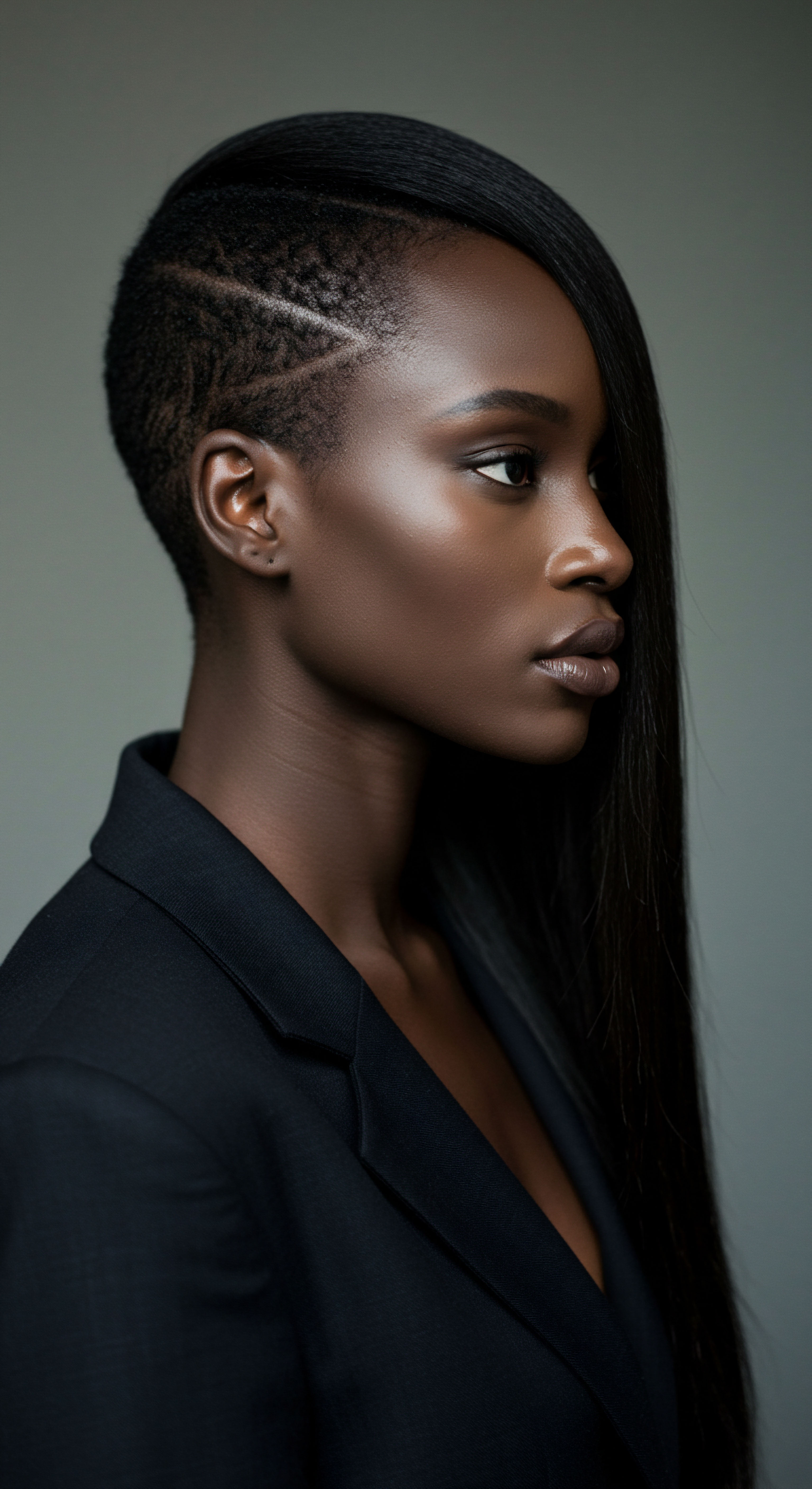
Ritual
Stepping into the realm of daily practice, we seek to understand how the foundational knowledge of urban air’s impact on our scalp translates into practical wisdom. Our routines, those gentle repetitions of cleansing, nourishing, and protecting, become a shield against the city’s unseen aggressors. This section explores how intentional rituals can mitigate the discomfort whispered by an irritated scalp, offering a pathway to serene strands and enduring scalp health. It is here that we translate scientific understanding into tangible acts of care, recognizing that our hands, guided by knowledge, can bring solace to a stressed scalp.

Crafting a Personalized Cleansing Protocol
The first line of defense against urban air’s effects on the scalp lies in the cleansing ritual. It is not merely about removing product buildup; it is a deliberate act of purging environmental pollutants that cling to the hair and scalp. For textured hair, this cleansing must strike a delicate balance ❉ thorough removal of irritants without stripping the scalp’s natural oils or exacerbating dryness.
Consider the frequency of cleansing. While some hair types thrive on infrequent washes, a scalp exposed to high levels of urban pollution may benefit from more regular, gentle cleansing. This ensures that particulate matter, VOCs, and heavy metals do not accumulate, reducing their opportunity to trigger irritation. The choice of cleanser becomes paramount.
Opt for sulfate-free formulations, rich in gentle surfactants that effectively lift impurities without compromising the scalp’s delicate lipid barrier. Ingredients like Colloidal Oatmeal or Aloe Vera within cleansers can offer soothing properties, calming an already reactive scalp even during the wash process.
Intentional cleansing routines form the initial barrier against urban air’s impact on scalp health.
The application technique also holds significance. Instead of vigorous scrubbing, which can mechanically irritate a sensitive scalp, focus on massaging the cleanser gently into the scalp with the pads of your fingertips. This stimulates circulation while allowing the cleansing agents to effectively bind with and lift pollutants. A thorough rinse is equally important, ensuring no residue remains to contribute to irritation.

Nourishing the Scalp Barrier
Once cleansed, the scalp requires thoughtful nourishment to rebuild and fortify its barrier against future exposure. This involves incorporating treatments that replenish moisture, provide antioxidant protection, and soothe inflammation. Scalp serums or oils infused with antioxidants like Vitamin E or Green Tea Extract can help neutralize the free radicals generated by urban pollutants, mitigating oxidative stress. Ingredients such as Ceramides or Hyaluronic Acid can help restore the scalp’s moisture balance, improving its resilience.
For textured hair, where dryness can be a persistent concern, integrating a regular scalp oiling practice can be particularly beneficial. Oils like Jojoba, which closely mimics the scalp’s natural sebum, or Castor Oil, known for its conditioning properties, can create a protective layer, shielding the scalp from direct pollutant contact while locking in moisture. This ritual transforms a simple act of care into a profound gesture of protection, bolstering the scalp’s defenses from within.
| Ingredient Category Antioxidants |
| Example Ingredients Vitamin C, Green Tea Extract, Ferulic Acid |
| Benefit for Urban Scalp Neutralizes free radicals from pollution, reduces oxidative stress. |
| Ingredient Category Barrier Support |
| Example Ingredients Ceramides, Hyaluronic Acid, Glycerin |
| Benefit for Urban Scalp Restores moisture, strengthens the scalp's protective barrier. |
| Ingredient Category Anti-Inflammatories |
| Example Ingredients Aloe Vera, Bisabolol, Allantoin, Chamomile |
| Benefit for Urban Scalp Calms redness and itching, soothes irritated scalp. |
| Ingredient Category Pollution Defense |
| Example Ingredients Moringa Seed Extract, Tara Tannins |
| Benefit for Urban Scalp Forms a protective film, prevents pollutant adhesion. |
| Ingredient Category Selecting products with these components can significantly enhance scalp resilience in polluted settings. |

The Nighttime Sanctuary and Bonnet Wisdom
The hours of rest offer a unique opportunity for scalp recovery and protection. The nighttime ritual, particularly for those with textured hair, extends beyond merely preserving a style; it becomes a sanctuary against the lingering effects of urban air. While we sleep, our scalp can repair and regenerate, provided it is shielded from further environmental insults and mechanical friction.
The wisdom of the Bonnet, or a silk/satin pillowcase, becomes profoundly apparent in this context. These simple yet effective tools do more than just prevent tangles and preserve moisture. They create a physical barrier between the scalp and any airborne pollutants that may have settled in the sleeping environment, such as dust, allergens, or residual particulate matter that might have entered the home. This physical separation minimizes further exposure and reduces the likelihood of irritation from friction against rough fabrics.
Beyond physical protection, the bonnet also helps maintain a stable microclimate around the scalp. This consistent environment supports the scalp’s natural repair processes, allowing it to focus on cellular regeneration rather than battling external stressors. For scalps prone to irritation from urban air, this uninterrupted period of calm and protection is invaluable, contributing significantly to long-term comfort and health. The thoughtful selection of sleep protection, therefore, becomes an indispensable part of a comprehensive regimen aimed at mitigating urban air’s impact.

Relay
As we delve deeper, our conversation shifts from the tangible acts of care to the profound interplay of larger forces shaping our scalp’s dialogue with the urban landscape. This “Relay” section invites us to consider the intricate dance where scientific understanding meets societal context, where individual biology intertwines with environmental policy, and where the resilience of textured hair is tested by the very air of our cities. It is a journey into the less apparent complexities, exploring how the silent symphony of urban pollution impacts not just our hair, but our very sense of well-being within a broader cultural and environmental tapestry.

Beyond the Surface Oxidative Stress and the Hair Follicle
The influence of urban air extends far beyond mere surface deposition; it penetrates to the very roots of our hair health. Pollutants, particularly fine particulate matter (PM2.5) and polycyclic aromatic hydrocarbons (PAHs), are known to induce systemic oxidative stress. On the scalp, this translates to a relentless assault on the delicate cellular machinery of the hair follicle.
The follicle, a miniature organ, is responsible for hair growth and its structural integrity. When exposed to chronic oxidative stress, its ability to function optimally is compromised.
This cellular distress can manifest as micro-inflammation around the follicle, a subtle yet persistent state that disrupts the hair growth cycle. Research suggests that prolonged inflammation can lead to a premature entry into the catagen (regressing) and telogen (resting) phases of hair growth, potentially resulting in increased shedding or thinning over time. For textured hair, which often experiences slower growth cycles and can be more susceptible to breakage, this added stress can exacerbate existing challenges, making it harder to retain length and density.
Urban pollutants trigger cellular distress within hair follicles, disrupting growth cycles.
The cumulative effect of this follicular assault can be profound, transforming what might begin as mild irritation into a more persistent state of discomfort and compromised hair vitality. It compels us to consider not just the visible signs of irritation, but the deeper, cellular narrative unfolding beneath the surface.
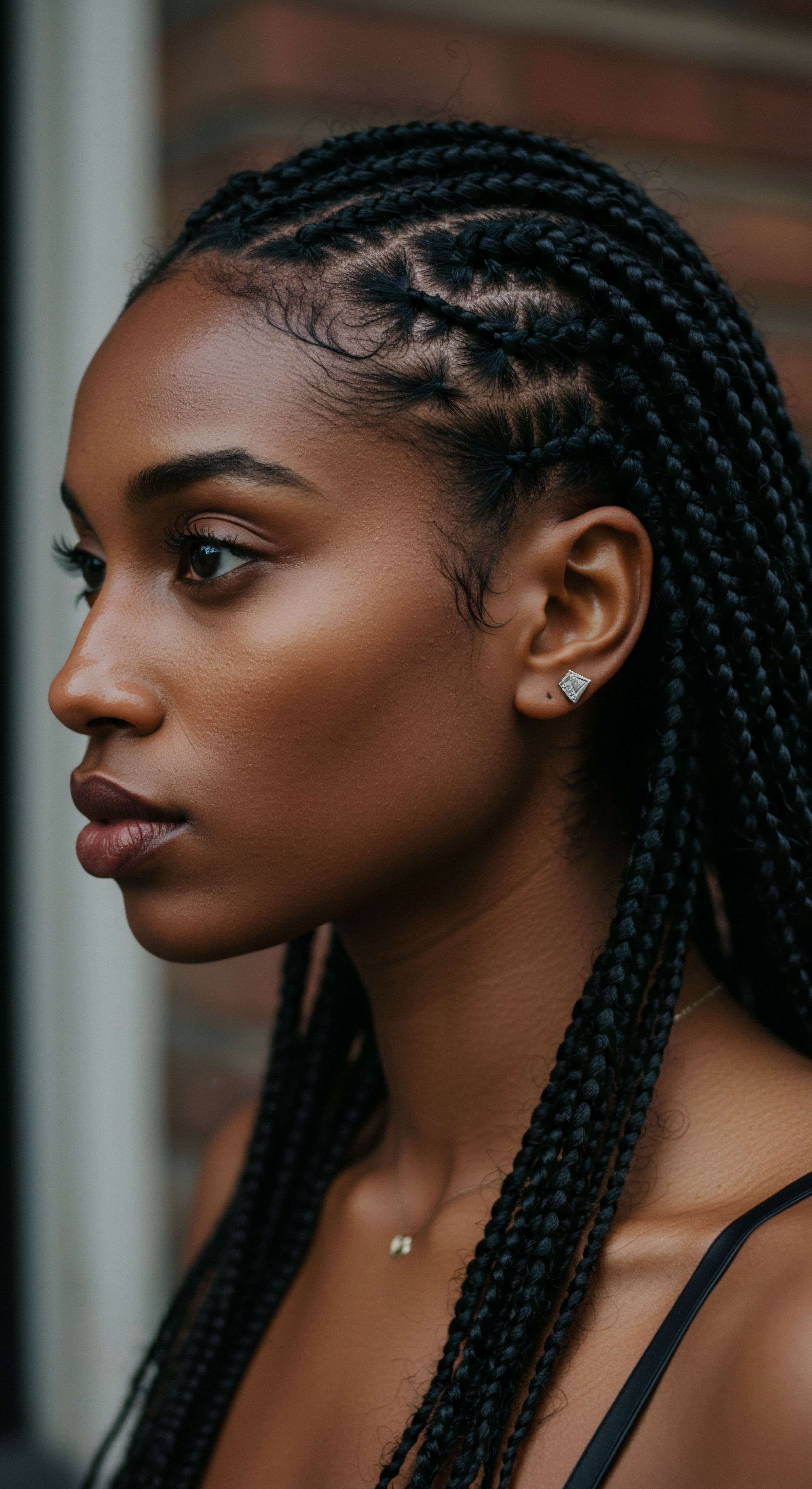
The Scalp Microbiome in a Polluted City
Our scalp is home to a thriving, diverse community of microorganisms, collectively known as the Scalp Microbiome. This intricate ecosystem plays a pivotal role in maintaining scalp health, contributing to barrier function and modulating immune responses. Urban air pollution, however, acts as a significant disruptor to this delicate balance.
Pollutants can alter the composition and diversity of the scalp microbiome, favoring the proliferation of certain opportunistic pathogens while suppressing beneficial commensals. For example, some studies suggest that increased exposure to PM2.5 can lead to an overgrowth of fungi like Malassezia, a common culprit in dandruff and seborrheic dermatitis. This dysbiosis, or imbalance, can trigger inflammatory responses, leading to increased itching, flaking, and redness—classic signs of scalp irritation.
The interaction is bidirectional ❉ a healthy, diverse microbiome can offer a degree of protection against environmental stressors, while a compromised microbiome becomes more vulnerable to pollution’s adverse effects. Understanding this complex ecological shift on the scalp offers a more holistic perspective on urban air-induced irritation, moving beyond simple chemical irritation to a nuanced appreciation of microbial harmony.
- Pollutant Deposition ❉ Airborne particles and gases settle on the scalp.
- Oxidative Stress Induction ❉ Pollutants generate reactive oxygen species, damaging cells.
- Inflammatory Pathway Activation ❉ Cellular damage triggers immune responses and inflammation.
- Barrier Function Compromise ❉ Lipid and protein structures of the scalp barrier are weakened.
- Microbiome Dysbiosis ❉ Balance of beneficial and opportunistic microbes is disrupted.
- Follicle Dysfunction ❉ Chronic stress affects hair growth cycles and integrity.
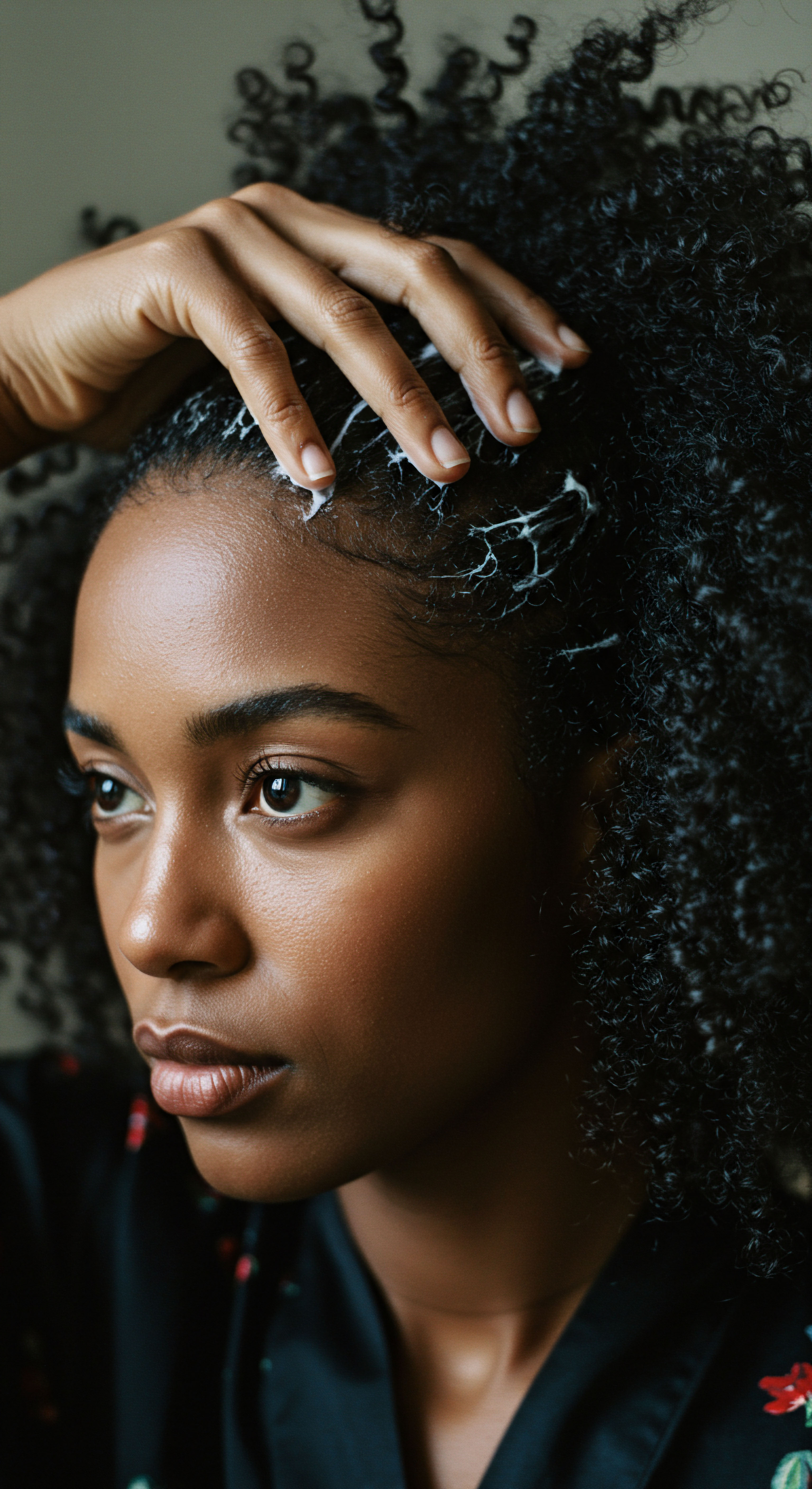
Environmental Justice and Hair Health Disparities
The conversation surrounding urban air pollution and scalp irritation cannot be separated from the broader context of environmental justice. Historically, and presently, communities of color, particularly those in urban centers, disproportionately bear the burden of environmental pollution. Industrial zones, major highways, and waste facilities are often sited in or near these neighborhoods, leading to higher concentrations of airborne toxins. This systemic inequity means that individuals with textured hair, often residing in these communities, face a magnified and continuous exposure to pollutants.
This persistent exposure creates a compounding effect. Not only are individuals more likely to experience chronic scalp irritation and associated hair health challenges, but they also face additional socioeconomic barriers to accessing specialized care or pollution-mitigating products. The resilience of textured hair, often celebrated for its versatility and strength, is tested daily by these compounded environmental stressors. This highlights a critical intersection where environmental policy, public health, and hair wellness converge, demanding a more equitable distribution of environmental burdens and resources.
The narrative of urban air’s impact on scalp irritation, therefore, becomes a microcosm of larger societal issues. It compels us to ask ❉ how do we, as a community dedicated to textured hair wellness, advocate for systemic changes that protect the health of all scalps, especially those most vulnerable to the unseen aggressors of the urban environment? It is a call to action, reminding us that true wellness extends beyond individual care routines to encompass the very air we collectively breathe.
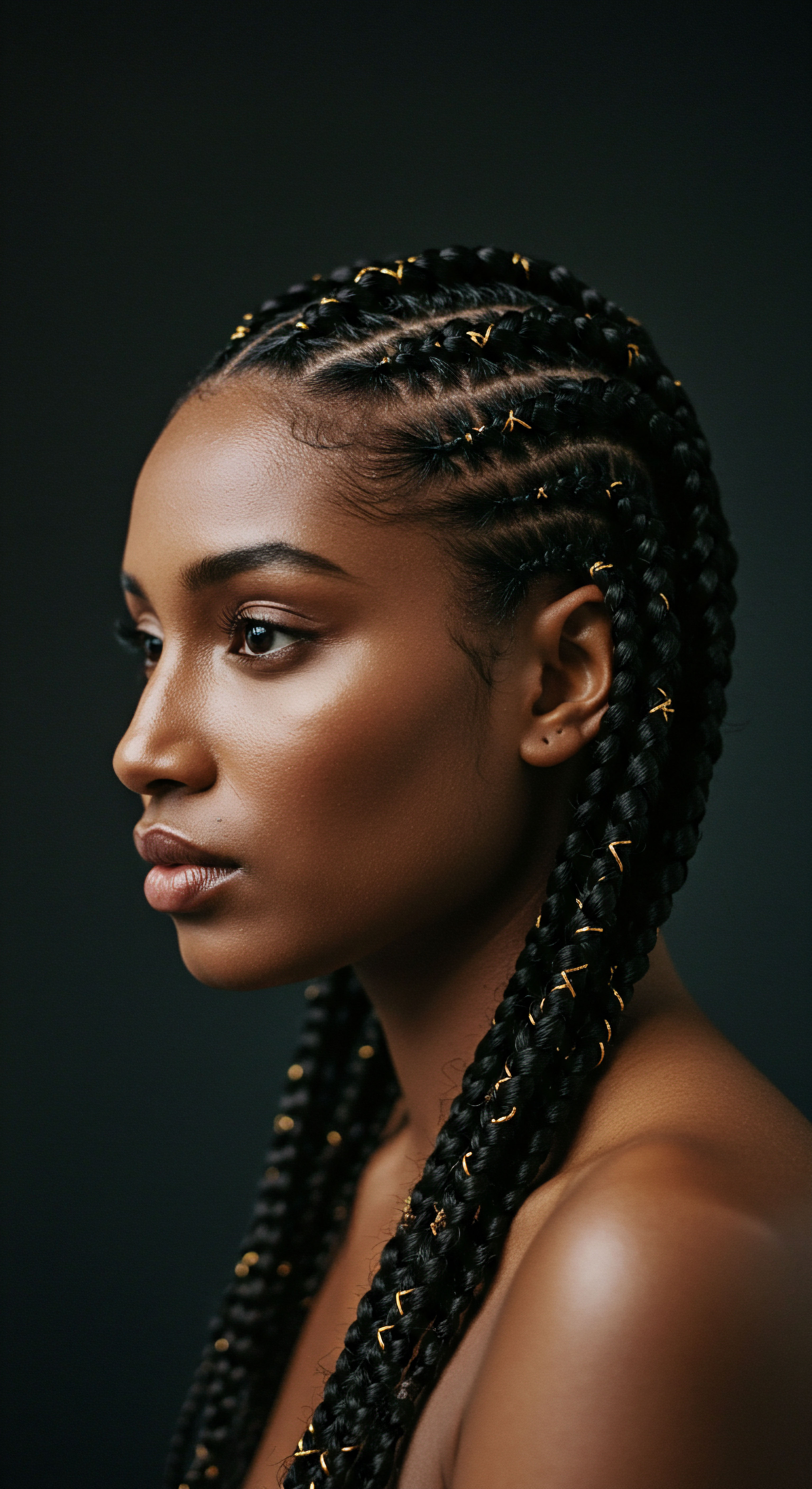
Reflection
Our journey through the delicate interplay between urban air and scalp irritation reveals a story far richer and more intricate than a simple cause-and-effect. It is a quiet dialogue between our intrinsic biology and the pervasive elements of our modern world, a testament to the enduring resilience of the scalp and the hair it nurtures. The insights gathered here are not merely a collection of facts, but an invitation to a deeper relationship with our textured strands, prompting us to observe, to understand, and to respond with mindful care. The path to a serene scalp in the city’s embrace is one of ongoing discovery, where knowledge becomes a gentle guiding hand, reminding us that even in the most bustling environments, harmony can be found.
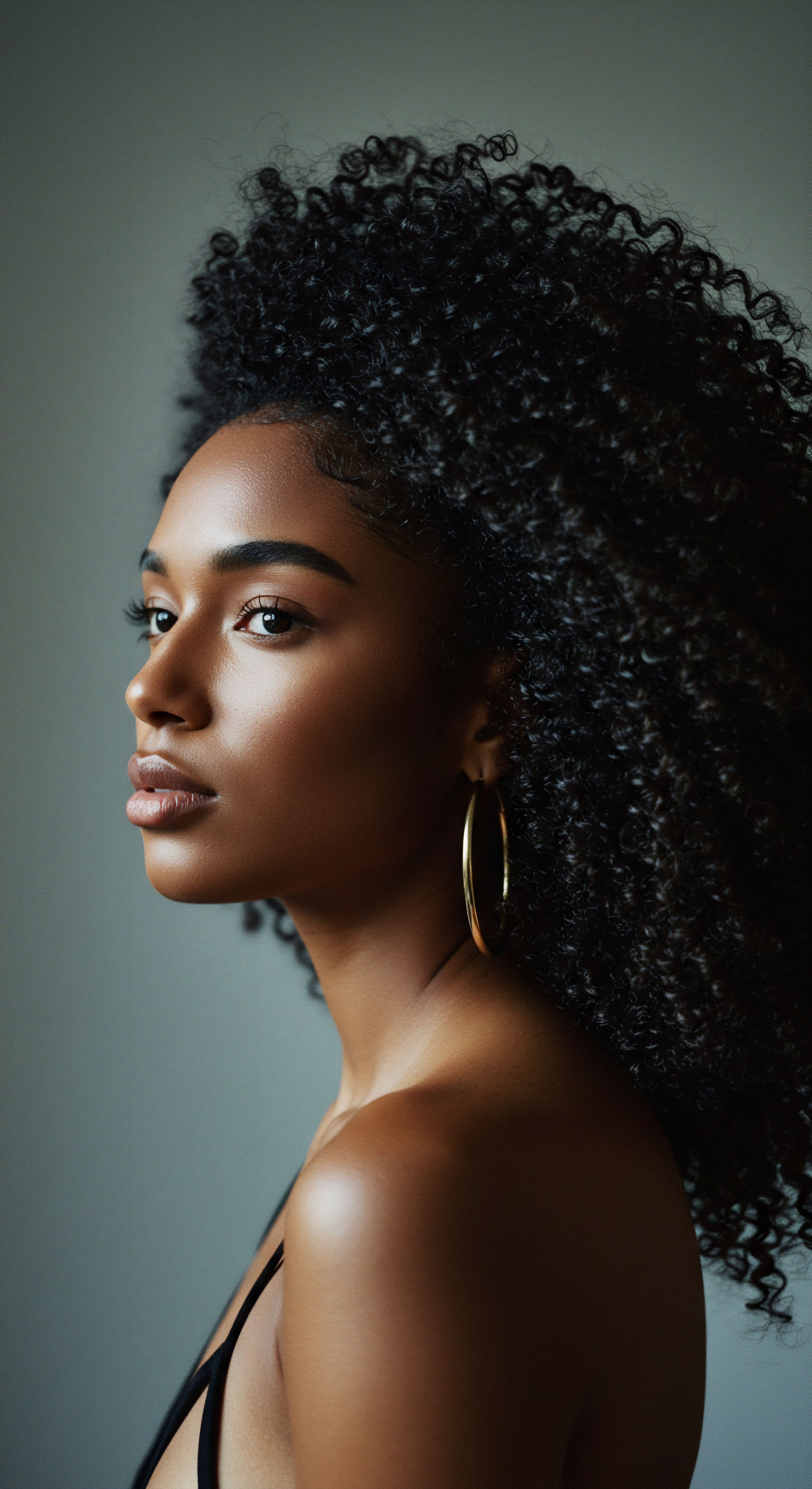
References
- Kim, K. E. Kim, Y. J. & Park, H. J. (2017). Effects of particulate matter on skin barrier function and inflammation. The Journal of Investigative Dermatology, 137(11), 2419-2426.
- Ryu, H. S. Kim, Y. J. & Jo, S. J. (2019). Particulate Matter 2.5 Induces Oxidative Stress and Inflammatory Responses in Human Dermal Fibroblasts. Oxidative Medicine and Cellular Longevity, 2019, 1-10.
- Jo, S. J. Kim, J. H. & Kim, Y. J. (2020). Impact of Air Pollution on Skin and Hair ❉ A Review. Journal of Cosmetic Dermatology, 19(4), 789-797.
- Chen, Y. Mao, Y. & Tang, J. (2018). Air pollution and skin diseases ❉ a systematic review of the epidemiological evidence. Journal of the European Academy of Dermatology and Venereology, 32(1), 12-21.
- Peters, A. Veronesi, B. & Calderón-Garcidueñas, L. (2016). Air Pollution and the Brain ❉ A Review of the Evidence. Environmental Health Perspectives, 124(10), 1475-1488. (Though not directly scalp, relevant for oxidative stress and inflammation).
- D’Orazio, N. Cestaro, A. & Pisani, M. (2019). The Role of Environmental Pollution in Hair Disorders ❉ A Review. International Journal of Environmental Research and Public Health, 16(11), 1988.
- Krutmann, J. Liu, W. & Li, L. (2017). The skin aging exposome. Journal of Dermatological Science, 85(3), 152-161.
- Araviiskaia, E. Berardesca, E. & Bieber, T. (2019). The impact of airborne pollution on the skin ❉ a review. Journal of the European Academy of Dermatology and Venereology, 33(8), 1493-1502.